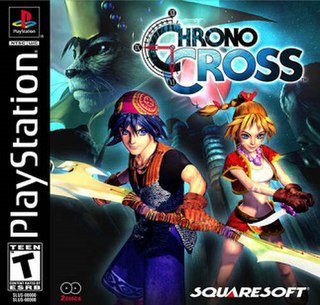
Chrono Cross is a 1999 role-playing video game developed and published by Square for the PlayStation video game console. It is set in the same world as Chrono Trigger, which was released in 1995 for the Super Nintendo Entertainment System. Chrono Cross was designed primarily by scenarist and director Masato Kato, who had help from other designers who also worked on Chrono Trigger, including art director Yasuyuki Honne and composer Yasunori Mitsuda. Nobuteru Yūki designed the characters of the game.

Throughout the history of baseball, the rules have frequently changed as the game continues to evolve. A few common rules most professional leagues have in common is that four balls is a base on balls, three strikes is a strikeout, and three outs end a half-inning.

Haunting Ground is a survival horror video game developed and published by Capcom for the PlayStation 2 in 2005. The story follows Fiona Belli, a young woman who wakes up in the dungeon of a castle after being involved in a car accident. She quickly befriends a White Shepherd, Hewie, and begins to explore the castle with his aid to seek a means of escape and unravel the mysteries of it and its inhabitants. The game shares many similarities with Capcom's earlier survival horror title Clock Tower 3 (2002), and has been described as a spiritual successor to the Clock Tower series.

Dark Seed is a psychological horror point-and-click adventure game developed and published by Cyberdreams in 1992. It exhibits a normal world and a dark world counterpart, which is based on artwork by H. R. Giger. It was one of the first point-and-click adventure games to use high-resolution graphics, to Giger's demand. A sequel, Dark Seed II, was released in 1995.

Clock Tower is a survival horror point-and-click adventure video game series created by Hifumi Kono. The series includes four games in total. The first entry, Clock Tower (1995), was developed by Human Entertainment and released on the Super Famicom in Japan. Human Entertainment developed two more entries, Clock Tower (1996) and Clock Tower II: The Struggle Within (1998), which were released on the PlayStation and localized outside Japan. The fourth and most recent title, Clock Tower 3 (2002), was co-produced by Capcom and Sunsoft for the PlayStation 2. Gameplay in the series generally involves the player hiding and escaping from enemy pursuers without any weapons to defeat them. Scissorman is a reoccurring antagonist and sometimes the sole enemy in the game.
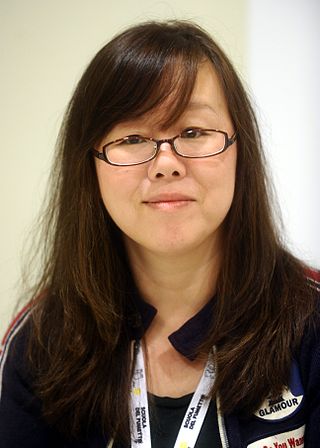
Risa Kimura, better known by her pen name Yun Kōga is a Japanese manga artist. She is married to fellow manga artist Tatsuneko, from whom he took the name of Risa Yamada. She is a graduate of Mita Senior High School, Tokyo. She currently lives in Setagaya, Tokyo with her husband and daughter.

ClockWerx is a puzzle video game created by Callisto Corporation that was released in 1995. The game was originally released by Callisto under the name Spin Doctor. Later, with some gameplay enhancements, it was published by Spectrum HoloByte as Clockwerx, which was endorsed by Alexey Pajitnov according to the manual. A 3DO Interactive Multiplayer version was planned but never released.

Clock Tower 3 is a survival horror video game co-produced by Capcom and Sunsoft for the PlayStation 2. Released in 2002, it is the fourth installment in the Clock Tower series, and the first and only video game directed by Japanese film director Kinji Fukasaku. The plot and characters have very little relation with the previous Clock Tower games. The story follows 14-year-old Alyssa Hamilton who is part of a family lineage of female warriors who travel through time to defeat evil spirits. Alyssa travels from her time in 2003 London to the 1940s and 1960s in order to defeat these "Entities" and bring peace to troubled souls.

Curse of Blackmoor Manor is the 11th game in the Nancy Drew point-and-click adventure game series by Her Interactive. The game is available for play on Microsoft Windows platforms as well as on DVD, Steam, and GOG.com released a digital version on their site. It has an ESRB rating of E for moments of mild violence and peril. Players take on the first-person view of fictional amateur sleuth Nancy Drew and must solve the mystery through interrogation of suspects, solving puzzles, and discovering clues. There are two levels of gameplay, Junior and Senior detective modes, each offering a different difficulty level of puzzles and hints; however neither of these changes affect the actual plot of the game. The game is loosely based on a book entitled The Bluebeard Room (1985).

Clock Tower is a survival horror point-and-click adventure game developed and published by Human Entertainment for the Super Famicom in 1995. It is the first installment in the Clock Tower series. The story follows orphan Jennifer Simpson soon after she is adopted by the Barrows family along with other orphaned girls. Shortly after arriving at the Barrows family manor, one of the other children is killed by a stalker called Scissorman. Jennifer must then explore the Barrows Mansion to find a way to escape while evading Scissorman, leading to one of the game's multiple endings. Clock Tower utilizes a point and click interface with the player controlling a cursor to direct Jennifer's actions.

The PlayStation Mouse is an input device for the PlayStation that allows the player to use a mouse as a method of control in compatible games. The mouse was released in Japan on December 3, 1994, the launch date of the PlayStation.

Clock Tower, known in Japan as Clock Tower 2, is a survival horror point-and-click adventure game developed by Human Entertainment and released for the PlayStation in 1996. It is the second game in the Clock Tower series after the original Clock Tower, which was released exclusively in Japan for the Super Famicom one year prior. The story takes place in Norway and follows a variety of characters as they attempt to survive the return of Scissorman and uncover the mystery of his seemingly immortal state. The scenarios encountered and endings vary widely based upon the player's actions.
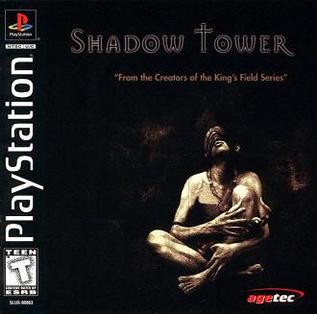
Shadow Tower is a 1998 action role-playing video game developed by FromSoftware for the PlayStation. The game was originally released in Japan by FromSoftware on June 25, 1998 and in North America by Agetec on November 23, 1999. Shadow Tower shares many similarities with the King's Field series of video games. A sequel, Shadow Tower Abyss, was released for the PlayStation 2 exclusively in Japan.

The Best is a Sony PlayStation budget range in Japan and parts of Asia. Similar budget ranges include Greatest Hits in North America, Essentials in PAL regions and BigHit Series in Korea.
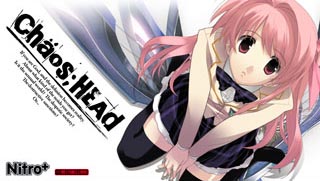
Chaos;Head is a 2008 science fiction visual novel video game developed by 5pb. and Nitroplus. It is the first game in the Science Adventure series. Following the original Windows release, the enhanced version Chaos;Head Noah was released for Xbox 360 in 2009, and has since been ported to multiple platforms. An English localization was released by Spike Chunsoft for Nintendo Switch and Windows in 2022. The game follows Takumi Nishijou, who gets involved in the "New Gen" serial murder case. He frequently experiences delusions and hallucinations, some of which the player can influence, which affects the progression of the story.

Shadow Tower Abyss is a role-playing video game developed and published by FromSoftware for the PlayStation 2. The game is a sequel to Shadow Tower and features a number of genre and mechanical elements that can also be found in Demon's Souls and the King's Field series. Shadow Tower Abyss was announced on 22 August 2001 and released in Japan on 23 October 2003. An English version was being developed by Agetec, but the project was cancelled by Sony Computer Entertainment America (SCEA), its publisher, prior to completion. A fan translation was released in 2011.
Noboru Sugimura was a Japanese television and video game writer best known for his work on the Metal Hero, Super Sentai, Resident Evil, Dino Crisis, and Onimusha series.

Clockwork Planet is a Japanese light novel series, written by Yuu Kamiya and Tsubaki Himana, and illustrated by Shino. Kodansha has published four volumes since April 2, 2013, under their Kodansha Ranobe Bunko imprint. The story is set in a clockpunk fantasy version of the world, in which the entire planet is run by clockwork. The main characters are five people who, after a month of meeting, become the world's most infamous terrorists.
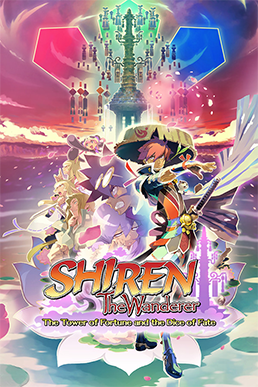
Shiren the Wanderer: The Tower of Fortune and the Dice of Fate is a roguelike role-playing video game developed by Chunsoft. It is the fifth main entry in the Shiren the Wanderer series, which is a subset of the larger Mystery Dungeon series. It was originally released for the Nintendo DS in 2010 in Japan.

Warhammer: Chaosbane is an action role-playing game developed by Eko Software and published by Bigben Interactive. It was released for Microsoft Windows, PlayStation 4, and Xbox One on 4 June 2019. Players choose to play as one of six character classes from the Warhammer Fantasy setting: a human soldier of the Empire, a High Elf mage, a Dwarf slayer, a Wood Elf scout, a Dwarf engineer, or a human witch hunter. The character must help save the Empire against the demons of Chaos. Downloadable content featuring a storyline around the undead Tomb Kings was released on 16 December 2019. An enhanced version of the game was released for Xbox Series X/S on 10 November 2020 and for PlayStation 5 on 12 November 2020.




















